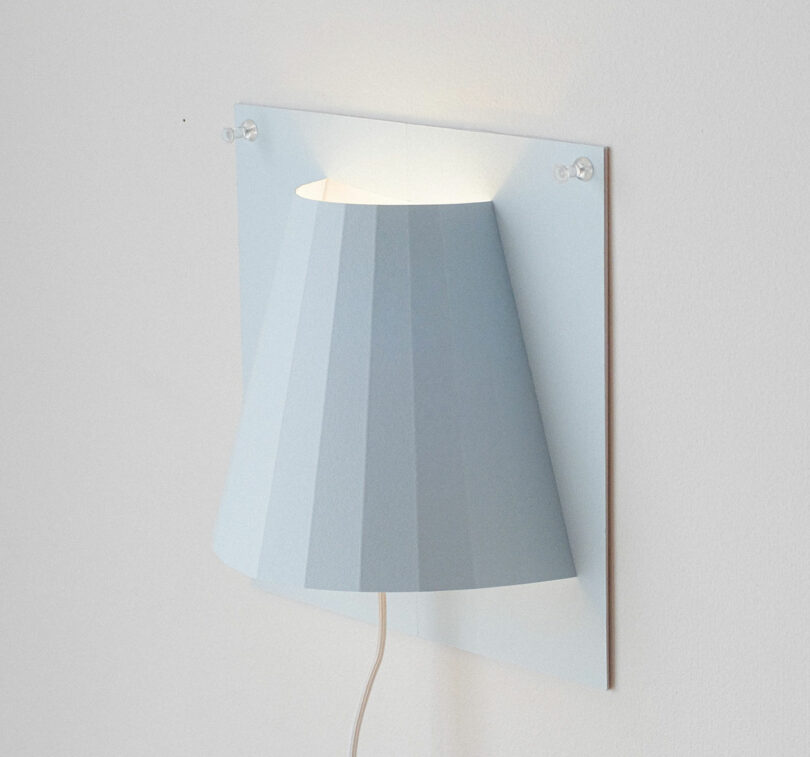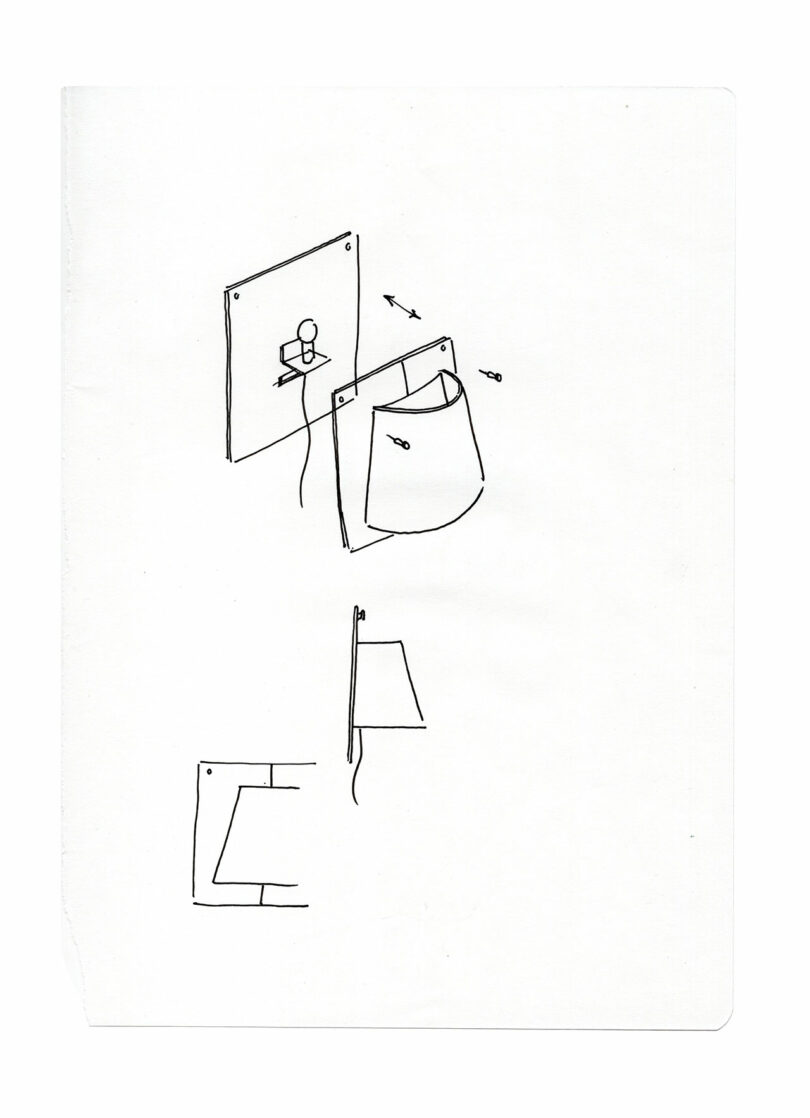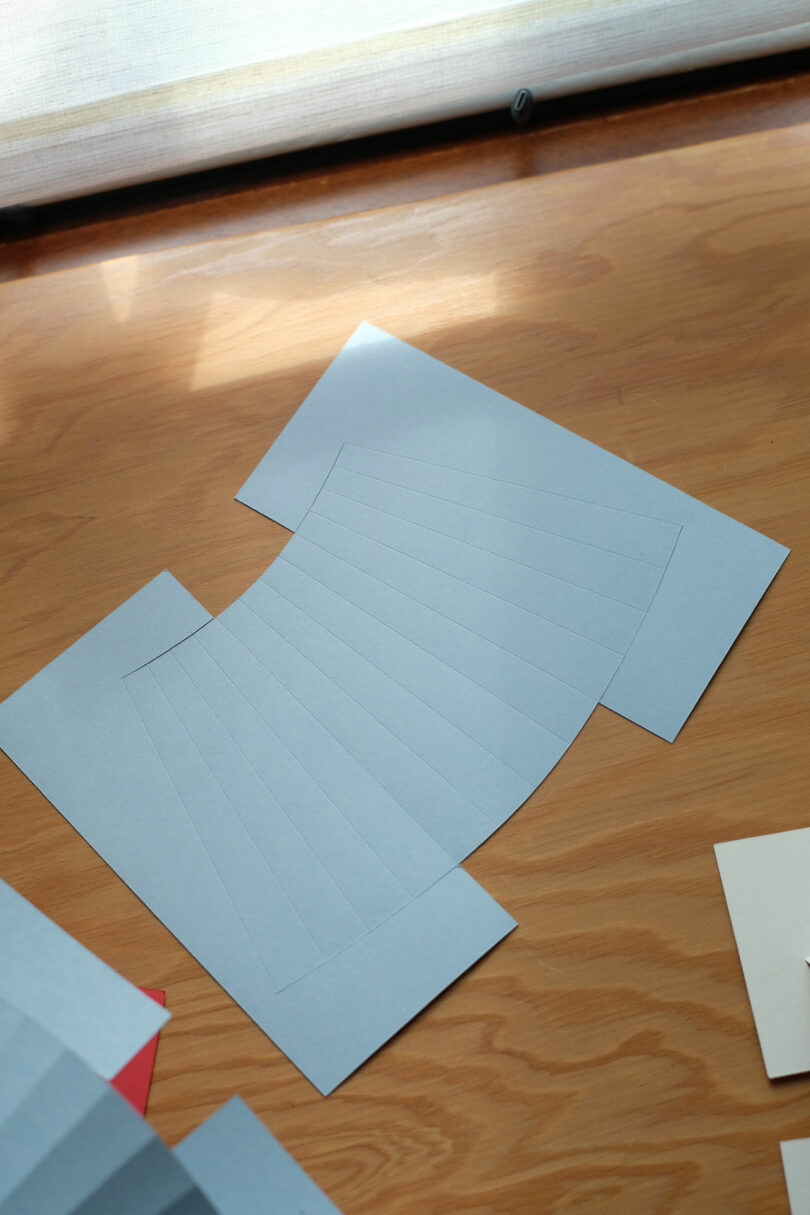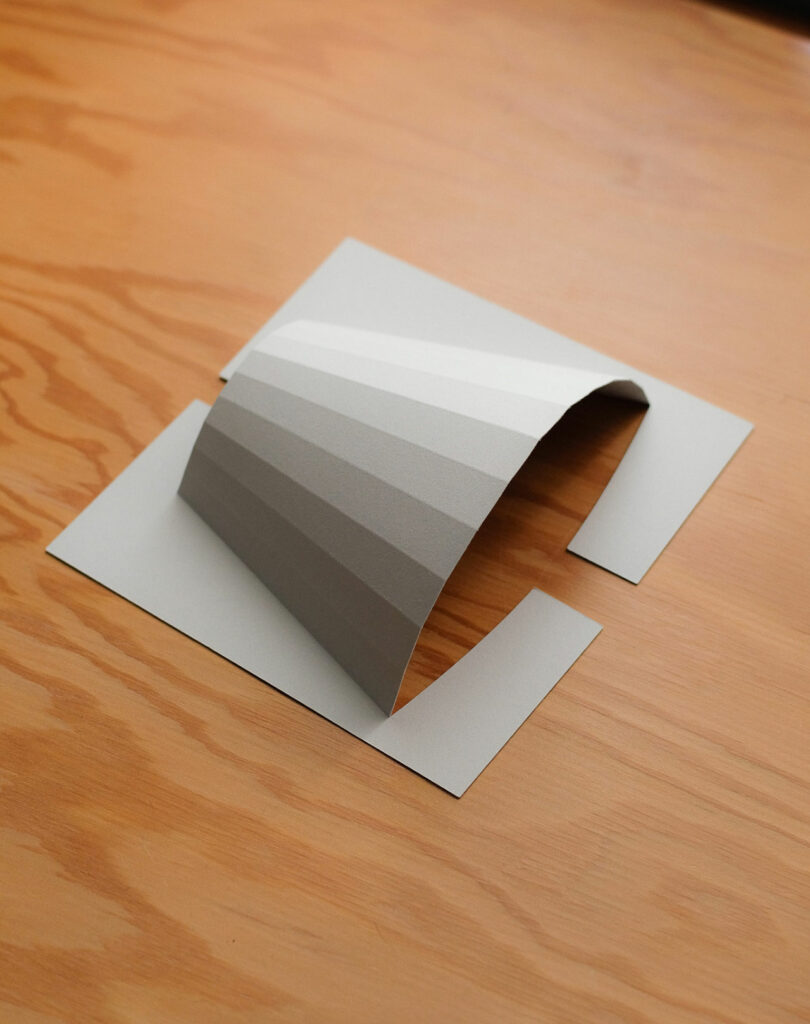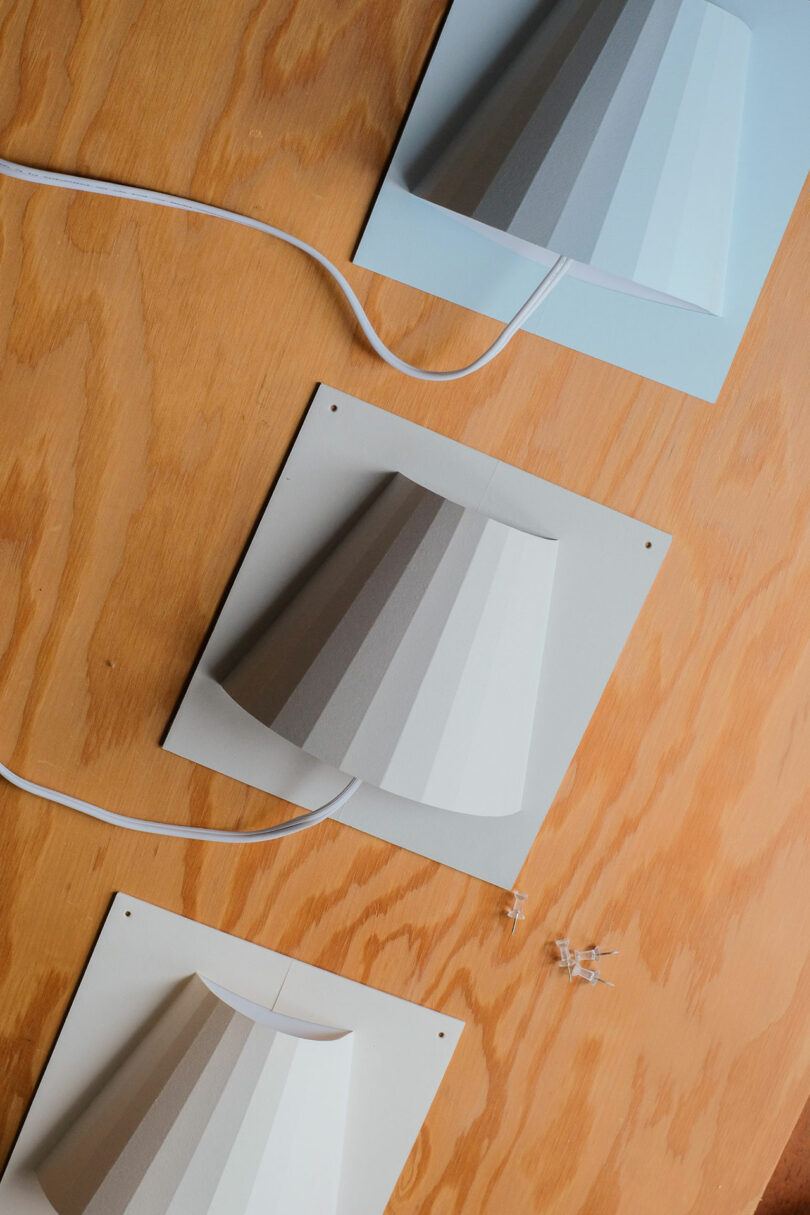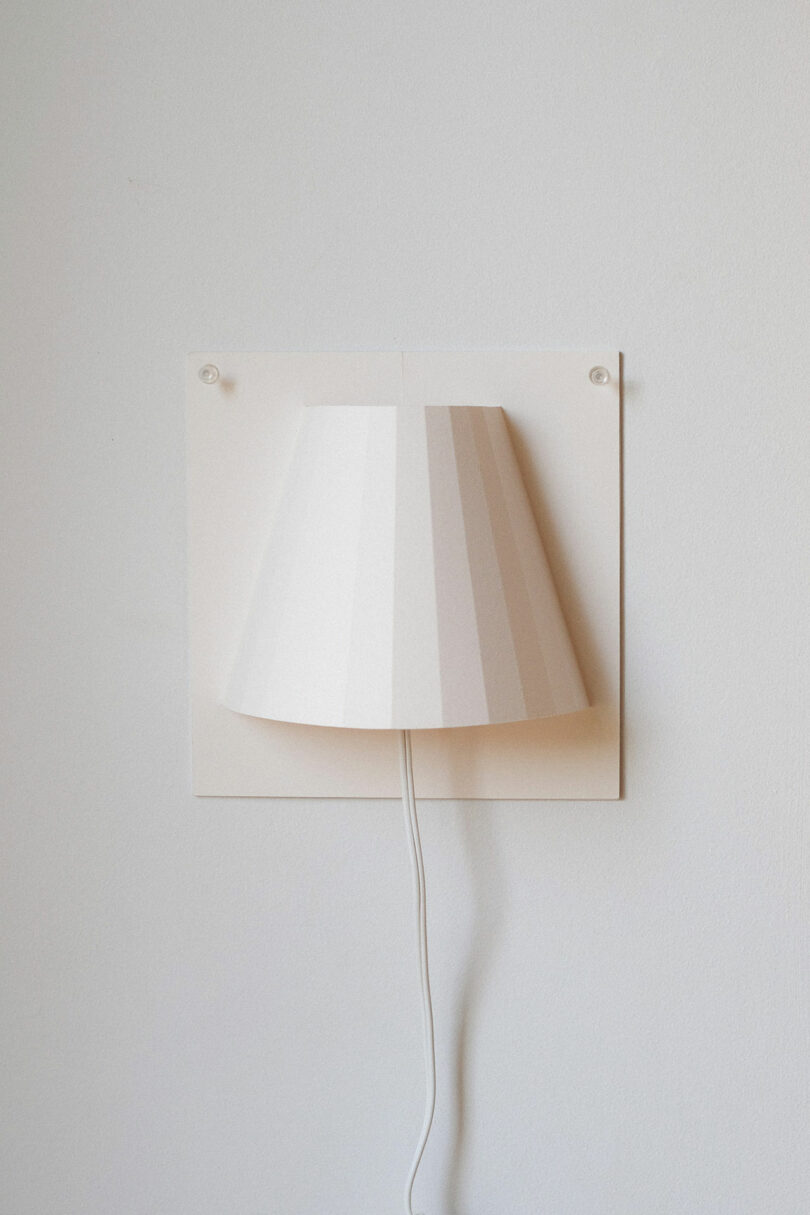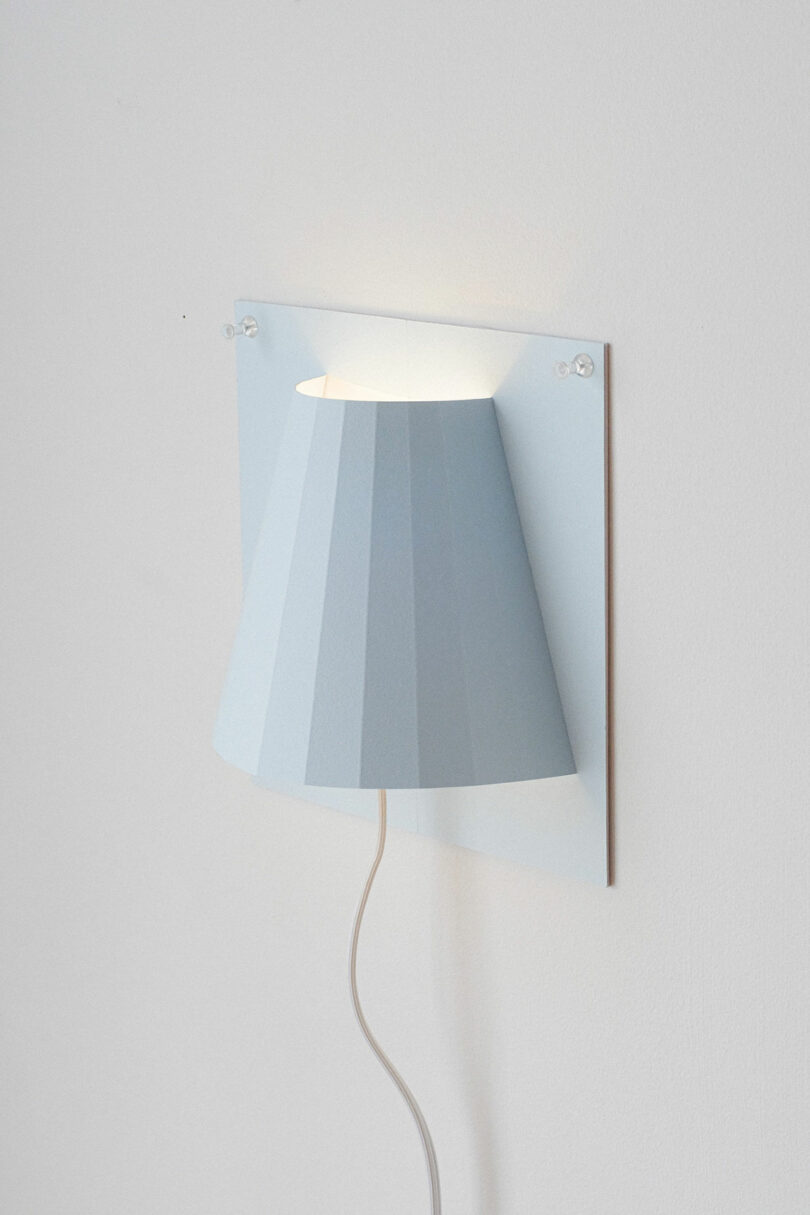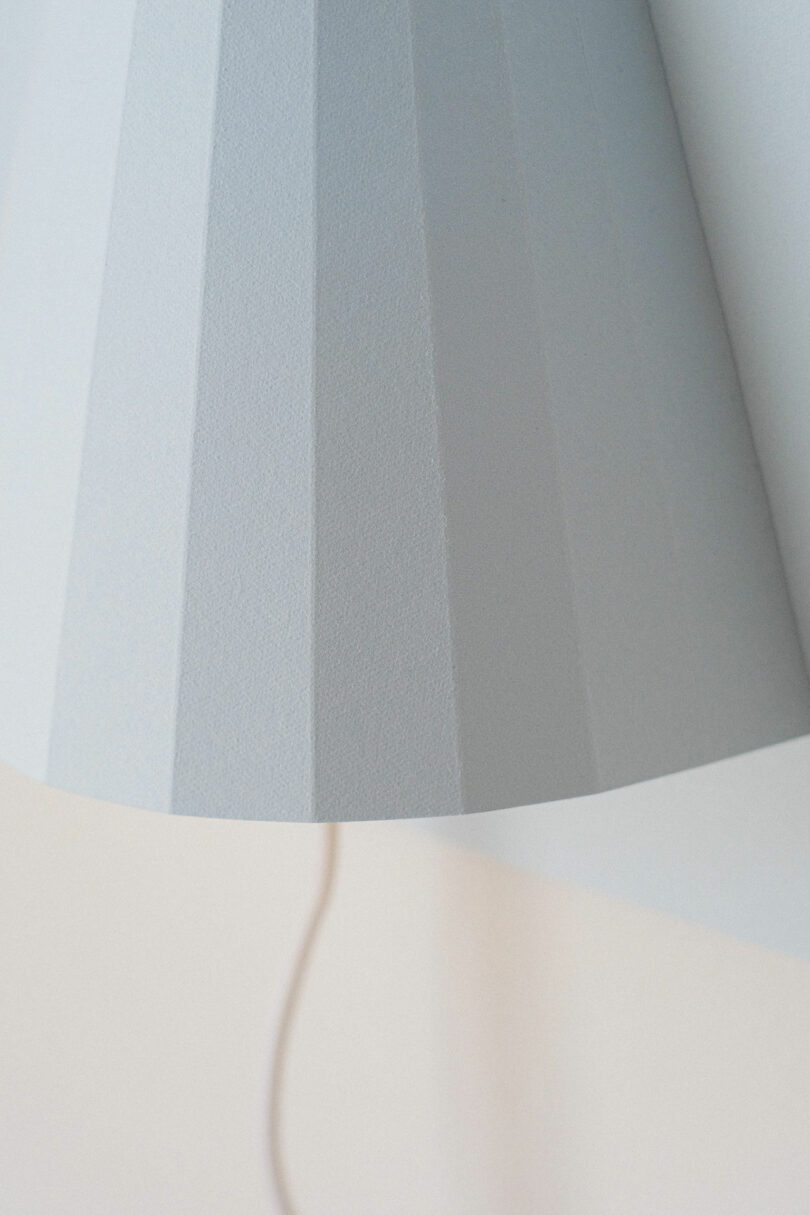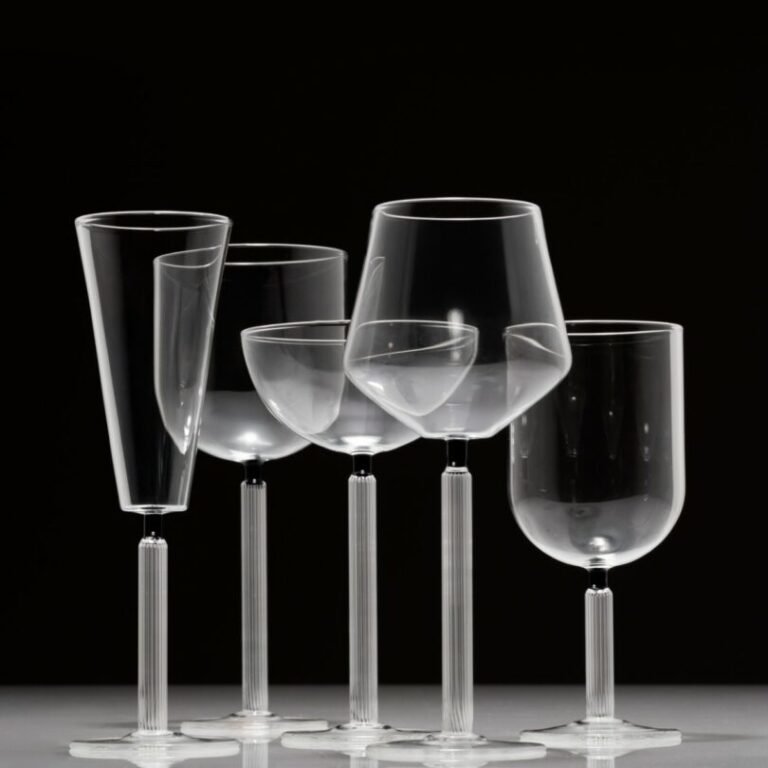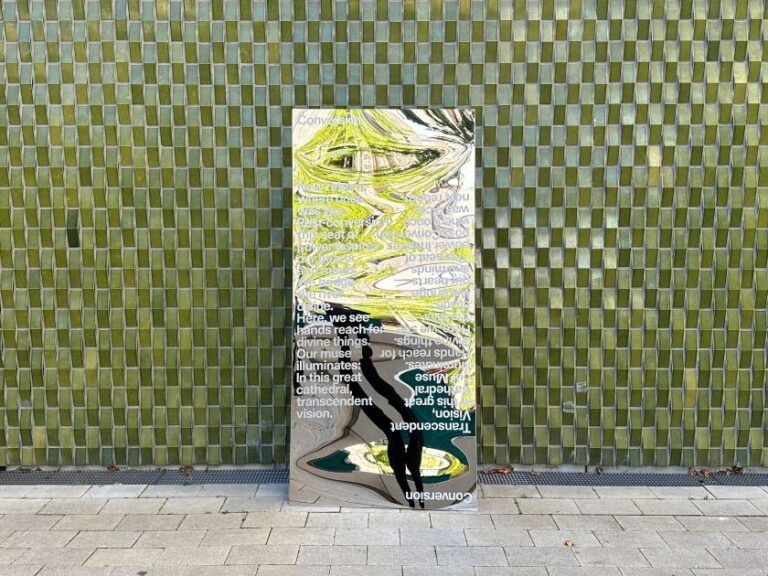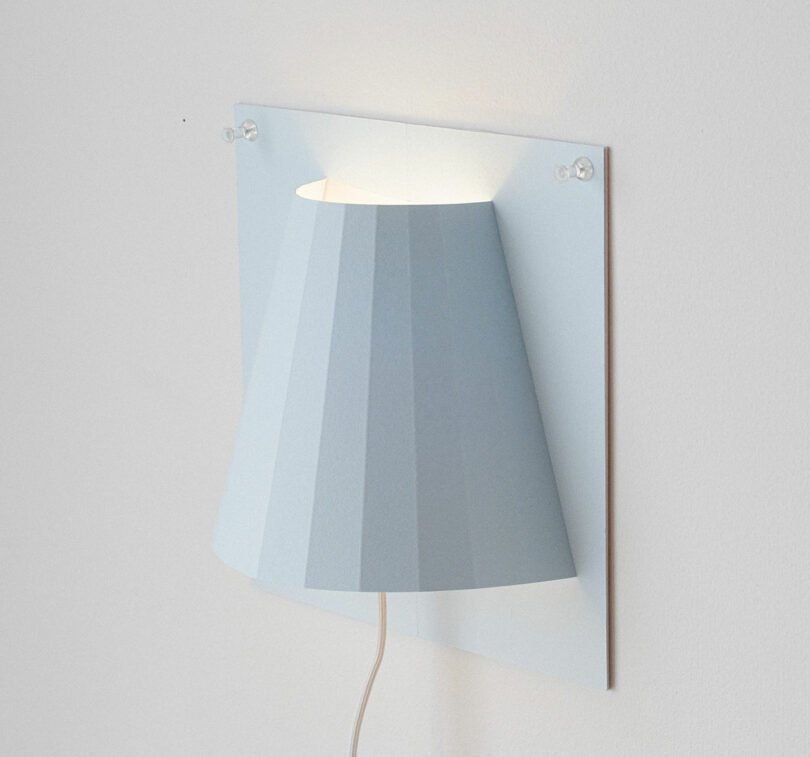
Before the days of Pinterest, the humble bulletin board with push pins has long been a tool for quick idea-making: fast, simple, and accessible. That rapid, almost improvisational rhythm can spark unexpected connections and moments of clarity that feel uniquely human. Toronto-based designer Maxwell Sims channels that same spirit into lighting with the Pin Sconce – a fixture that embraces immediacy, ingenuity, and a touch of playfulness while rethinking what a wall light can be.
Crafted from heavy cotton paper, the sconce borrows from pop-up card mechanics to lift the center of what at first glance looks like a delicate, fluted shade. Sims describes it as an homage to the “paperness” of the material itself – a celebration of fragility, tactility, and form in one gesture. In an exclusive interview, he shares the inspiration behind the design, and where he hopes to take the concept next.
There’s something that’s so intuitive about the Pin Sconce, and much of your work. How does materiality foster this connection?
I do work a lot with paper, so I’m glad that that was the impression, that there’s something kind of understandable about it. Paper, firstly, offers something very like kind of communicable, which I like. The result of a form, or the logic of a form, is easily communicated to someone who may not know anything about design, as opposed to something that’s injection molded or milled. The form can be very sort of esoteric, in a way, paper and sheet metal generally offer this very sort of constrained starting point, which I think is very easily understood by a lot of people who may engage with the work – this is why I ended up working so much with sheet metal and paper.
The practical, generative nature of paper fits so well into the concept of the Pin Sconce. How does this inform your process?
I feel as if a lot of design has moved to 3D modeling, 3D printing, and mostly existing in photographs on the internet. As a result of that, I think first, a lot of formal considerations or constraints have been lost, which makes objects look a certain way, so it’s hard to grasp as a viewer. Secondly, there’s some essence of humanity that’s maybe a bit lost in that sort of very complex industrial production, or just being a render on the internet. And so paper is something I can do from my studio that really does work against that sort of narrative, and I feel like, just like, also selfishly gives me some positionality to make something that hopefully reads as human. And that’s the dilemma, I find, as a younger, emerging designer is like, how do you even develop a positionality when everything feels like it kind of exists already online.
How does this flexible sustainability in material influence your design philosophy?
There’s a book called Small Is Beautiful – one of the principles was Existenzminimum. It was a German design movement operating on the idea that one way to approach designing things is to make them as little as possible. I don’t necessarily operate exactly on those terms, but the Pin Sconce is a good example. Of course, it could be sheet metal, or it could be acrylic, or anything else, but paper does the exact same thing, and it does it for less. And I think that there’s a satisfying quality to that. It’s operating on a minimum use of material, and I think that sustainability factors into that mindset. It just really needs to feel as if it’s something that’s being engaged with in a meaningful way.
Maxwell F. Sims is a designer engaging in the intersection where material, interaction, and function meet. Expressive yet intensely practical, his work readily engages a wider audience outside the design community, forging new connections.
To learn more about the Pin Sconce from Maxwell Sims, please visit maxwellsims.com.
Photography courtesy of Maxwell Sims.
